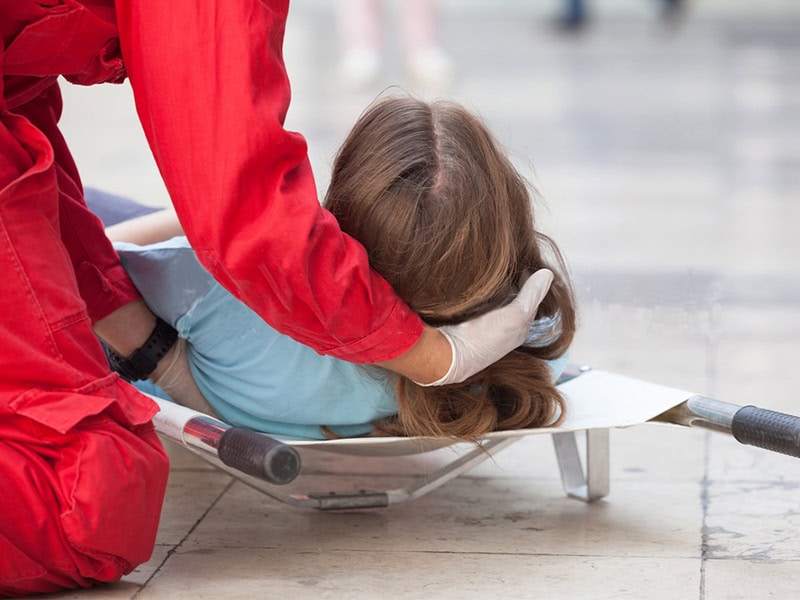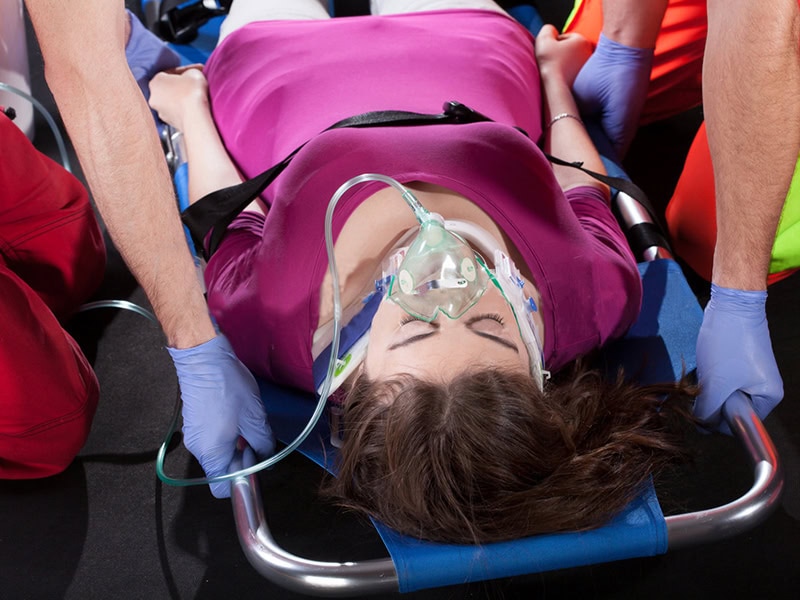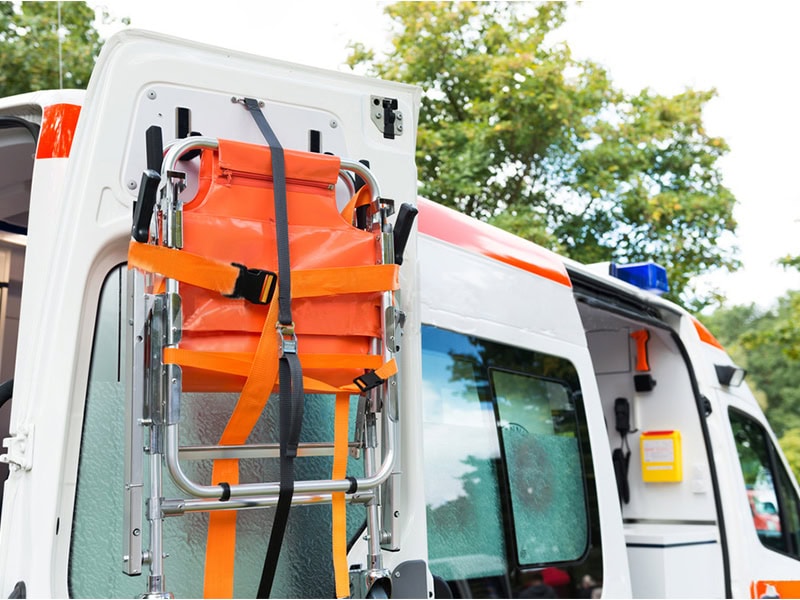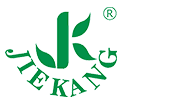
| Introduction | What is a Stretcher? | What is a Gurney? | Understanding Gurney Medical Equipment | Types of Medical Stretchers | Choosing the Right Option: Stretcher vs Gurney | Essential Safety Features in NMET | How to Maintain Gurneys and Stretchers? | Benefits of Gurney Medical Equipment in Medical Facilities | Purchasing and Refurbishing Gurney Devices | Conclusion |
Introduction
To transport patients, it is crucial to choose the appropriate patient transportation device. For emergencies, ambulances are used to provide immediate care. However, some patients do not require medical care urgently. For them, Non-Emergency Medical Transportation (NEMT) is used. NEMT carries the people who need assistance traveling to and from hospitals.
If you are a healthcare professional or NEMT provider, understanding NEMT stretcher vs gurney is really important. This helps you choose the right option for ensuring patient comfort and safety. This article will discuss both options in detail.
What is a Stretcher?

The first record of stretcher use dates back to the 14th century. A stretcher is a medical device for moving patients who have suffered an injury and cannot move. It is used for moving patients who require medical care. You can think of a stretcher as a portable bed carried by two or more individuals. They are designed to carry a single person. It consists of a flat frame with straps to hold the person in place. These are used by ambulance staff to quickly deliver injured to the hospital.
Limitations of Using a Stretcher in NEMT
Stretchers provide many advantages, but they can make it difficult to carry heavier patients or to move in confined spaces. If the patient’s weight is above the stretcher limit, the stretcher can be dangerous. Also, stretchers can become uncomfortable if the patient needs to change position frequently.
What is a Gurney?

A stretcher with wheels that is used for patient transport is referred to as a Gurney. The gurney has an adjustable height that allows easy transportation. Its wheels make it easy for a single person to carry the injured. These wheels can also be locked, and the straps are available to hold the person in place. This ensures stability during movement.
Gurneys are used both inside and outside the hospital. They can move the injured from one department to another hospital. In NEMT, gurneys are utilized for patients who cannot sit in an upright position. Furthermore, gurneys are a better option for long journeys compared to stretchers. Gurneys can support patients of all sizes due to their robust, fixed metal frame.
Limitations of Using a Gurney in NEMT
Gurneys can become uncomfortable if the person needs to rest or be on them for extended periods. Because of their size and attached tools, gurneys are difficult to fit into a conventional vehicle. Therefore, you will often see them in an ambulance or with a modified vehicle.
Types of Medical Stretchers
There are various types of medical stretchers. Each type is designed for specific scenarios, such as transport in ambulances or rough terrain. Specialized equipment, like that used in wheeled stretchers, is also available for specific medical needs. Important types are mentioned below:
- Ambulance Stretchers: Ambulance stretchers have wheels to transport patients at a greater speed. These stretchers are equipped with safety straps to ensure a safe journey.
- Folding Stretchers: Folding stretchers are the right choice for short distances. If the space is limited or you have to move patients through limited spaces, you should use a folding stretcher. These stretchers are also known as portable stretchers.
- Basket Stretchers: Basket stretchers are used when moving people vertically. Made from sturdy materials, basket stretchers can withstand difficult conditions.
- Staircase Stretchers: If there is a situation in which someone wants to move up or down the stairs and there is no elevator available, a staircase stretcher comes to the rescue in such a scenario.
- Spine Board Stretchers: People with spinal injuries require extra care to prevent further injury. A spine board stretcher is designed especially for spinal injuries, ensuring the patient’s body is held firmly.
- Manual vs Powered Stretchers: Manual stretchers need to be pushed by a person, while powered stretchers use a motor. Therefore, powered stretchers are more efficient.
- Bariatric Stretchers: Bariatric stretchers have the ability to carry heavier patients. Other stretchers with weight limitations cannot be used to transport overweight people.
Choosing the Right Option: Stretcher vs Gurney
NEMT Stretcher vs Gurney? What should you choose? The primary consideration when weighing these options is the comfort and security of the injured. Medical staff must consider factors such as weight, mobility, and medical needs when selecting a gurney or stretcher. You should focus on the following factors while choosing the right gurney or stretcher:
- Patient Condition: If the patient has a spinal injury, a spinal stretcher is suitable. However, if the person is obese, consider a bariatric stretcher.
- Portability: Stretchers are more portable than gurneys. So, if the search and rescue team has to go in difficult terrain, stretchers are the obvious choice.
- Ease of Use: Stretchers usually require at least two caregivers for transport. However, gurneys can be moved along by a single trained professional.
- Distance: Gurneys are better suited for long journeys compared to stretchers, as they have powered wheels.
- Cost: Gurneys are more expensive than stretchers due to their additional features.
- Patient Comfort: For extended periods, modern gurneys with padding or cushioning can make the patient feel comfortable. Some patients may benefit from adjustable headrests for comfort or medical necessity (e.g., post-surgery, respiratory issues).
Essential Safety Features in NMET

The features, such as secure straps and anti-slip surfaces, are essential for ensuring patient protection during rescue operations. Paramedics and caregivers must also follow manufacturer guidelines. Here are some necessary features to look for in a gurney bed or portable ambulance stretcher:
- Side rails for the well-being of the patient.
- It should be adjustable so the patient can be transferred easily.
- Smooth-rolling and lockable wheels for swift movements through the hospital.
- Padding and cushioning for patient’s comfort.
- Integrated with medical devices like IV poles, oxygen tank holders, and storage.
- Lightweight and easy to use.
- Removable head and footboards for easy patient transfer.
- Built from high-quality material.
How to Maintain Gurneys and Stretchers?
Proper management of gurneys and stretchers is crucial to prolong their lifespan and ensure the security of the injured. Routine inspections and care, along with adherence to manufacturer guidelines, help prevent any malfunction during use. With careful selection and regular maintenance, medical facilities can ensure that their gurney medical equipment remains reliable and functional for all their patient care and transport needs. Some prominent maintenance methods include:
- Regular Maintenance and Inspections: To maintain efficiency, these devices should be checked regularly. Check wheels, safety straps, side rails, and adjustable mechanisms for functionality and damage. Look for cracks, bends, or weak points that could compromise safety.
- Proper Cleaning: After every use, use hospital-grade disinfectant for cleaning. Pay close attention to high-touch areas like side rails, handles, and adjustment levers.
- Following Manufacturer Guidelines: The manufacturer’s care manual contains specific instructions regarding cleaning agents, lubrication, and inspection schedules. Adhere to recommended maintenance timelines to ensure all components function properly.
- Cushion and Padding: Tears in cushion and padding can cause discomfort to the patient. Replace worn or damaged cushions immediately for patient support.
For detailed guidance, you can check this Stryker Stretcher Maintenance Manual.

Understanding Gurney Medical Equipment
Gurney medical equipment, including stretchers and gurneys, plays a crucial role in emergency medical services (EMS) and non-emergency medical transportation (NEMT). In emergency situations, they can be used if someone is severely injured or cannot walk. In NEMT, the gurneys and stretchers are used to assist people moving.
Benefits of Gurney Medical Equipment in Medical Facilities
Gurney medical equipment provides a safe and secure platform for patient transportation, reducing the risk of injury to both patients and medical personnel. Modern stretchers and gurneys are designed to prioritize patient comfort and care, making them an important part of all medical care facilities. Gurney devices can also help to reduce the risk of medical errors and improve patient outcomes. The significance of these devices in medical care facilities cannot be overemphasized.
Transporting Patients with Ease
In emergency scenarios, it is crucial to move patients in a timely manner, and gurneys facilitate this. Modern gurneys allow patients to be moved as quickly as possible, reducing care delays and potentially life-saving situations. For guidelines on safe patient handling, check out this AST Manual.

Saving Time
Time is often a critical factor in healthcare, particularly in emergencies. Gurneys saves caregivers a lot of time by efficiently moving patients. Whether in the emergency room, operating room, or on the way to diagnostic imaging, using a gurney allows smooth and swift movement.
Patient Safety
The features like railings and straps ensure patient safety during search and rescue operations. If there are no railings, the patient may fall, making the condition even more complex. Gurneys are equipped with mechanisms that keep patients secure and prevent unnecessary movement.
Accessibility for Diverse Patient Needs
With different types of gurneys available, patients with special needs can be transported easily and in a timely manner. For example, for spinal injury patients, spinal gurneys are available, ensuring proper positioning to prevent additional harm during transport and treatment.
Purchasing and Refurbishing Gurney Devices
Medical facilities can purchase new or refurbished equipment, depending on their specific needs and budget. Refurbished equipment can typically provide an affordable alternative to new devices. When purchasing medical devices, facilities must consider the cost, quality, and purpose of the equipment. Hospitals can choose between purchasing new or refurbished medical equipment.

New and Modern Gurneys
New gurneys are often state-of-the-art, with the latest technology. They come with full warranties, ensuring that any defects will be addressed promptly. Modern gurneys often include features like adjustable headrests and powered wheels. Moreover, antibacterial and waterproof mattresses on modern gurneys support medical hygiene standards. They are generally more expensive but may be worth the investment for hospitals with higher budgets or urgent patient needs.
Refurbished Gurneys
Refurbished equipment can provide a cost-effective alternative to new equipment without compromising on quality or well-being. Medical institutions that are on a tighter budget may find refurbished gurneys and stretchers to be a practical option. These devices are often inspected, repaired, and tested to meet safety standards, making them suitable for medical use.
Both options should be evaluated carefully, keeping in mind the facility’s specific needs, the number of patients being transported, and the required features of the gurney.
Conclusion
In conclusion, gurneys and stretchers are important tools in both emergency and NEMT. These devices not only aid in safe and efficient patient movement but also ensure comfort and stability during transit. Choosing the appropriate device, stretcher vs gurney, depends largely on the patient’s condition, the type of device required, and the level of care needed.
Are you looking for high-quality medical transport devices? Contact us at Jiekang Medical Equipment. You can visit our website to view our products or contact our experts to discuss your specific needs.



